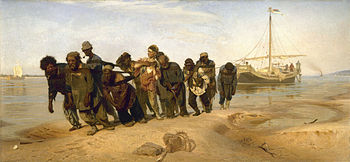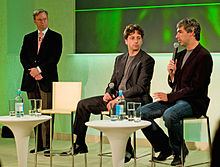What should be the team in the classroom? 30 people? What for?!
 or
or  ?
?The last two topics in the blog "Education 2.0" were devoted to the " Major flaws ". I would like to raise the question is not the main, but very significant drawback: a large number of students in the class.
We are so used to the fact that there should be 30-40 students in a class that we don’t even question it (I was in a class of 42 students). I would venture to refute this dogma.
')
Why are there so many children in the class now?
If you believe Robert Kiyosaki , the modern education system originated in Prussia in the era of industrialization. The country needed workers and soldiers, and the system brought up not creative thinking people, but subordinates who unquestionably performed simple tasks.
A class is a small detachment or workshop. This is a future company of soldiers, or a bunch of workers under the command of a brigadier. Workers must do primitive work, soldiers must do primitive work. 30-40 subordinates of one person is the maximum as much as possible more or less to keep in sight. More - just run away.
And how much should it be?
For primitive work, you can gather a crowd of people. And for complex, intellectual large groups are simply meaningless. 2, 3, 4 people, maximum 6. And you should note that ordinary companies of people gather in such numbers. Groups gather in such numbers. It `s naturally.
And now the question: learning, is this a primitive job, or is it still highly intellectual? Are we going to a modernized society, or in an era of industrialization?
What is bad big teams?
I will give you an example. There is a large sheet of plywood weighing 60 kg. It can comfortably carry 6 people. Yes, each of 10 kilograms, but quite feasibly, quickly identified the leader who leads, others calmly obey, or can correct his actions without conflict.
And now we will offer to carry this sheet to 30 participants. Immediately revealed at least 4 companies, each with its own leader. At least 2 leaders of their companies will come together in a dispute over general leadership, and they will be supported by their friends. But all this stuff, in fact.
So, 30 people took the sheet, each carries only 2 kg, which is very easy. Anyone can pretend that, bears, and no one will notice. And the neighbor will suspect that he does not carry, but pretends. Now we have 3 types of behavior:
- Honestly bear, but suspect that the neighbor does not carry.
- Do not carry, but pretend to carry, in a quiet laugh.
- Open not bear, pointing to the absurd situation.
And the paradox is that the first two points are really anti-social, because they generate distrust. And the third point is antisocial formally! All are antisocial, this is not a problem of conscience, but an incorrect organization.
What teams are waiting for today's students?
Primitive work is getting smaller. Soldiers are only marched by a mob, real fighting is conducted in small groups, they are easier to manage and more efficiently operate. The factories are CNC machines.
30 programmers under the leadership of one person will be able to write a good program? 30 pregnant women give birth to a child in a week? Who has not read the Mythical Man-Month ? Read urgently!
So, as you know, we are moving into the future, towards modernization and innovation. And we bring up children like future barge-haulers on the Volga .
We all know how to criticize, and you suggest something clever!
I understand that if you collect classes of 6 people, then there will not be enough teachers. In addition, it is necessary and honor the tradition. Therefore, we must somehow cope with classes of 25-30 people.
Without claiming a 100% solution, I will offer my options:
We break a class into groups
The beginning of the lesson is a short “meeting”, the teacher gives a general direction. Further, the principle "1 teacher - 30 silent pupils" ends. The class is divided into groups of 3-4-5 people. Each group examines the subject of a textbook or other material. Inside the group, someone understands more quickly, explains to others. The teacher walks between groups and helps, can clarifies. But the main work is done inside. Next, inside the groups is the solution of problems. There is a competition between groups.
It is very important that groups learn to organize themselves quickly. Roles were quickly distributed: leader, brain, secretary, practician, and so on. This is a separate topic, but she needs to study at school, and not on the street in companies.
It is important to constantly change the composition of the groups. Schoolchildren should be able to navigate in different situations, be flexible. And it is important to change roles: someone is often the “brain” - let them be the “secretary” in order to assess how difficult and responsible the work is.
Advanced Study Groups
It is known that we are moving towards the fact that the number of required items is getting smaller. 3 items per day can be left on the old system. And subjects with in-depth study can be carried out in small groups. Small rooms (for example, separated by a partition) collect groups of up to 6 people. They can study subjects independently with textbooks and computers, and once a week meet with the teacher in order to adjust the curriculum.
Authorship
Painting by Ilya Repin "Barge Haulers on the Volga" When reprinting the material, I beg you to refer to my personal page . Thank.
Source: https://habr.com/ru/post/101554/
All Articles